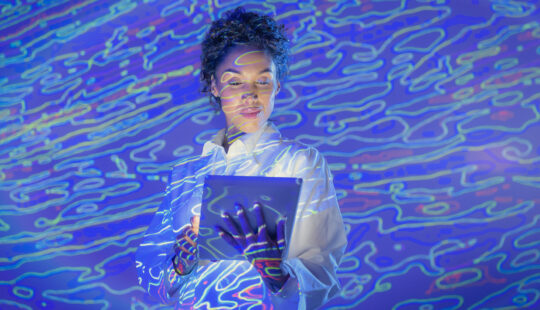2020 has been particularly tough on those who work in the developer community – from the isolated nature of project-based work to the pervading pandemic limiting social gatherings. However, the need to connect, share, and collaborate is more critical than ever as new challenges, technologies, and possibilities continue to emerge and evolve.
I’m proud to have closed out a challenging year on a high note, with events focused on connecting this important community within the SAP ecosystem. Partnering with Microsoft, I was honoured to be a judge for the first (of hopefully many) ANZ Hackathons. We also proudly delivered our Inaugural TechEd global event virtually to this corner of the globe.
SAP TechEd 2020 was an online experience designed to bring technology experts, developers, explorers, and enthusiasts together as a community – to exchange ideas, experiences, and insights.
This digital technology showcase provides on-demand video content from over 350 keynotes, lectures, and strategy talks, equating to over 180 hours of learning and information.
In the lead up to the event, SAP released a comprehensive PDF outlining all the key elements and benefits of SAP Business Technology Platform, plus some key critical insights into product engineering news and developments.
SAP TechEd 2020 is as much about informing the developer community as it is about supporting it, facilitating more collaboration and exchange across industries and areas of expertise.
In the spirit of cross-brand partnership, SAP and Microsoft recently hosted our first ever ANZ Hackathon. The idea was to go beyond infrastructure and test what’s possible in SAP Cloud Platform and Microsoft Azure, two heavyweights in cloud computing services.
Our aim with this hackathon was to pivot away from the traditional SAP on Azure message of computing storage, big data, networks, and automation. We wanted to do something different and connect closer with our often-overlooked developer community. This is what fuelled the hackathon – a shared desire to unite SAP and Microsoft developers.
Rachel Bondi, Chief Partner Officer for Microsoft Australia shares my excitement around the innovation this hackathon was able to highlight:
“The SAP on Azure hackathon was a prime example of the deep integration between Microsoft and SAP, both in terms of our technology platforms and our partnership. The level of innovation, creativity and ingenuity demonstrated by our partners to create these real-world solutions is astounding. It speaks to Azure’s value as a platform for running your SAP workloads – not only do we provide best-in-class performance, but our Data services, Power Platform and Integrations can help our customers immediately innovate on around of their SAP deployment and get more from their data. “
The main event spanned over a two-week period, which is long for any hackathon, but reasonable considering everyone was working and collaborating remotely. Everyone used Microsoft Teams for communicating, file sharing, live collaboration, and accessing support from our extremely helpful mentors, who went above and beyond with support, troubleshooting, and assisting participants.
We had mentors and experts from Microsoft and SAP to guide participants through any challenge or questions they had throughout the hackathon. The success of this event is a testament to everyone’s dedication and hard work, especially since all were contributing to the hackathon while managing their day jobs and regular roles.
We had 11 partner teams registered: Team EY, NTTA Data, Bourne Digital, HCL, Deloitte, Incture, three teams from Accenture, and two from DXC Technology.
Judging the hackathon alongside me were – Anil Bhaskaran, Vice President of Innovation Office at SAP APJ; Luka Debeljak, SAP on Azure Sales Director, for Microsoft Singapore; Marcus Lim, Head of Digital Transformation Office for SAP ANZ; Mark Tempes, SAP on Azure Technology Director for Microsoft; and Rahat Ahmad, Director of Partner Technology and ISV’s for Microsoft.
Submissions were based on a PowerPoint template provided to teams that had to highlight architecture diagrams, challenges, and solutions, including a 3-minute video of their app in flight. Our key scoring areas were:
1. business applicability
2. feasibility
3. creativity and innovation
4. sustainability and community impact
In third place was Team Incture ‘Wolfpack’ with their firefighting app. The focus here was to improve agility and responsiveness of authorities reacting to bushfire disasters, thereby reducing delays in state of emergency calls while providing public visibility.
The mobile app provided an admin panel for tracking disasters while the public interacts via SAP Cloud platform portal, using mobile services for reporting incidents. The app included an SAP conversational bot for interactive guided procedures for users managing fire danger.
Second place went to Team Bourne Digital for their CovidSafe Building Access Management Solution. This solution has applications across industries and was particularly valuable for managing employee OH&S. Team Bourne Digital’s submission included an animated video of a worker who’d returned to the office early, going on to outline the risks involved.
Team Bourne Digital used a blend SAP and Microsoft technology to use thermal screening technology for facial recognition and temperature checks. The data passes through authentication via Face API and hooks into a backend ECC system to see if office access can be granted. This solution was supported on the backend by an ERP with things like medical certificates and negative test results attachments in Fiori.
First place went to Team ‘Gone Viral’ from DXC Technology with their solution BusIntelligence. This was developed to address public transportation’s challenge of consolidating massive and disparate data sets for to utilise real-time insights. This has been a long-standing problem that they team were able to solve by blending SAP and Microsoft solutions – demonstrating the value of intelligent analytics for public transport in a post-pandemic world.
Leveraging BusIntelligence’s general transport feature specification, the team accessed a public data source of all public transport information. Team ‘Gone Viral’ selected NSW bus data, which was ingested using Azure function and Azure Data Factory, to coordinate multiple small data sets into ADLS Gen2. This simplified migration to SAP Data Warehouse Cloud and enabled visualisations through Power BI, pinpointing data detail down to individual passengers.
Team ‘Gone Viral’ left a hidden scene after their submission’s credits, which highlighted the solution’s ability to be applied to other case studies easily. Allowing users to amend the ingestion function from NSW to Queensland buses showed BusIntelligence’s versatility and adaptability, which helped the team from DXC clinch victory.
The common theme of the event wasn’t just the harmonious collaboration between developers, platforms, and expertise – but the way all participants utilised what was available to improve people’s lives, ensure their safety, and provide peace of mind as we try to rebuild beyond COVID-19.
I would like to give special thanks to the mentors, judges, organisers, and participants that made all this possible – I hope we were able to create some working bonds across brands and expertise areas. May the developer community continue thriving, creating, and sharing their ideas and solutions with us all, so we can continue living more efficiently, intelligently, and inter-connectedly.
This article was originally published on Linkedin.



